Stuff After Death
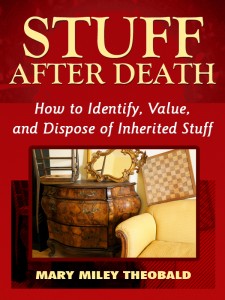 It happens to most of us at some point. A loved one dies and we are left with a houseful of Stuff, much of which is unfamiliar and unwanted. How do we decide what is worthless and what is worth saving? How do we know what to keep, sell, donate, or toss?
It happens to most of us at some point. A loved one dies and we are left with a houseful of Stuff, much of which is unfamiliar and unwanted. How do we decide what is worthless and what is worth saving? How do we know what to keep, sell, donate, or toss?
In clear and entertaining language, Mary Theobald provides shortcuts and solutions to the inevitable problems that arise when dealing with Stuff after the death of a loved one or when a senior downsizes into a congregate care facility. Don’t lose sleep wondering whether you’ve sold a valuable object for a pittance! Maximize your dollars and minimize your worries with STUFF AFTER DEATH.
ebook $4.99; paperback $9.99 Amazon or Barnes & Noble
Chapter 1: Don’t Throw Out the Can Opener. Defines the problems and pitfalls in deciding what to keep, what to sell, what to donate, and what to throw out.
Chapter 2: The Rush Job. Discusses the options for those who have no time to spend on a thorough evaluation, yet still care about getting a fair financial return for the heirs: using an estate appraiser to auction off the bulk of the estate, donating to charity, giving away, and throwing away.
Chapter 3: The Thorough Job. Outlines the greater number of options for those who have the time and inclination to maximize the money the heirs receive and to donate items to their best use: pros and cons of using antiques dealers, appraisers, and auctioneers, donating to charity, donating to museums, giving away, throwing away, garage sales, selling on-line, and selling furnishings with the house.
Chapter 4: What Is It? What Is It Worth? What Do I Do With It? Provides the meat of the book: 28 categories arranged alphabetically from Art to Weapons. Some sections, such as Eyeglasses, are short (one paragraph), while others, like Linens, are several pages long and contain subcategories such as blankets, quilts, bedspreads, table linens, bed linens, and handkerchiefs. Each section has information on how to identify the objects, how to estimate or learn their value, and what to do with them if the heirs don’t want to keep them. Categories include Art, Books & Magazines, Christmas Decorations, Clothing & Accessories, Collections, Dishes, Electronics, Eyeglasses, Furniture, Jewelry, Kitchenware, Linens for Bed & Table, Lamps, Luggage, Medicine, Memoirs, Mirrors, Music & Musical Instruments, Paint, Photos & Albums, Records & Videos, Rugs, Silver, Sporting Equipment, Tools, Toys, Vehicles, and Weapons.
Chapter 5: Avoiding the Family Feud. Discusses steps people can take before their deaths to avoid distribution problems later: writing a will with a detailed list, using stickers to mark objects or video to indicate what goes where, gifting before death, and other tried-and-true methods. It gives ways heirs can minimize family feuds over equitable distribution: rotating choices, one person making equal lists and others choosing first, selling everything at estate auction and letting heirs bid, conducting mock auction with limited amounts of money. It warns about theft by caregivers and suggests when families remove valuables from the home.
Reviews
A must-have resource for anyone of any age! We all inherit “Stuff” at one time or another, and this book tells you exactly where the money or memory lies!” —Allison Mitchell, Legacy Organizing Specialist with Abundance Organizing
Stuff After Death was an indispensable assistant to my mother in cleaning out their house- despite both of my parents being firmly alive! –Sarah M. St.Germain, Hartford, CT
In Stuff after Death Mary Miley Theobald offers a common sense guide to closing the final chapter on a loved one’s life. In addition to a wide range of online resources to help gauge the value of possessions, she gives the reader permission to jettison the flotsam of household objects without guilt. For instance, old textbooks rarely have value. Old coins, on the other hand, could be treasure.
Stuff after Death provides practical advice ranging from how to dispose of the ordinary impedimenta of life, like bath towels–give them to the local veterinarian–to a list of museums as the final resting place for unique items of historical or cultural interest.
The task of emptying the home of a departed loved one, or dividing Grandma’s things among the survivors is often emotionally, physically and intellectual exhausting. Distance and deadlines for emptying a residence can make an already daunting task even more bewildering.
Theobald walks the reader through strategies for evaluating the credentials of appraisers and differentiating between sentimental and intrinsic value. She provides insight about auctions and appraisals in an engaging writing style.
While Stuff after Death is aimed at those settling estates, downsizing Boomers will find its wisdom an invaluable aid to getting out from under a lifetime’s worth of acquisitions. — S. E. Warwick, Richmond
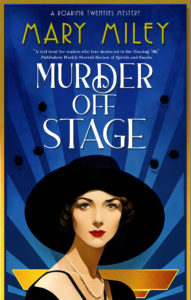 Murder Off Stage
Murder Off Stage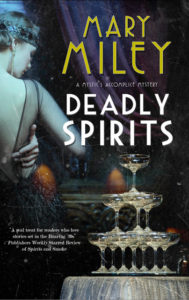


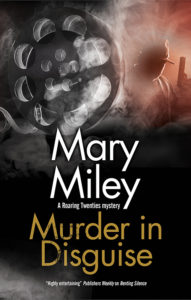
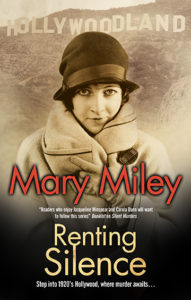
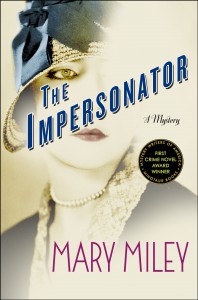
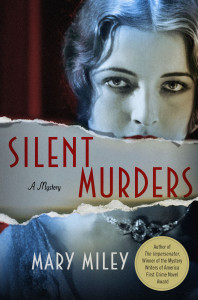


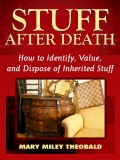



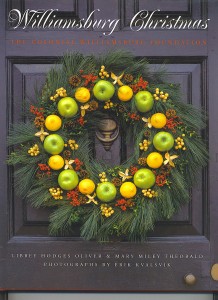

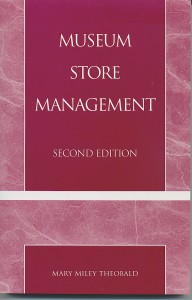
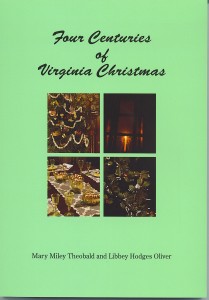
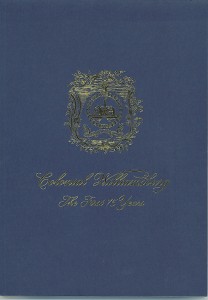





like me on Facebook follow me on twitter linkedin pinterest rss